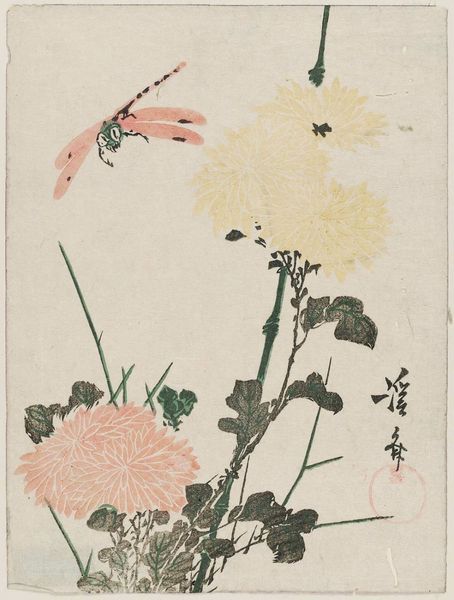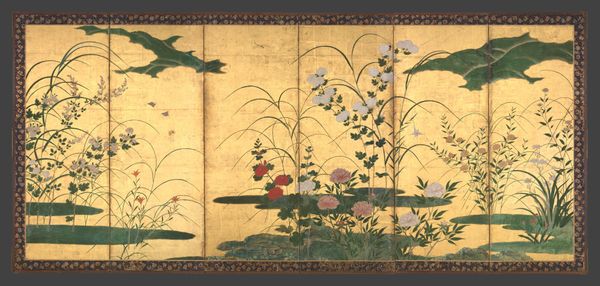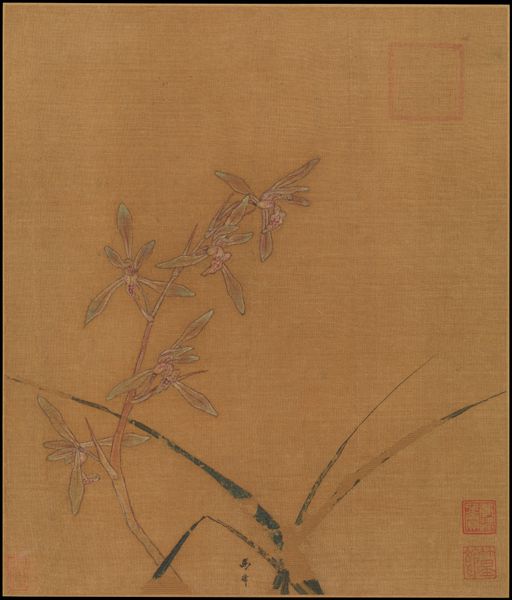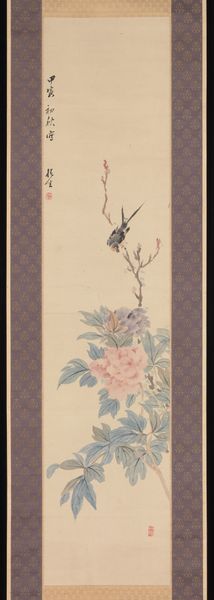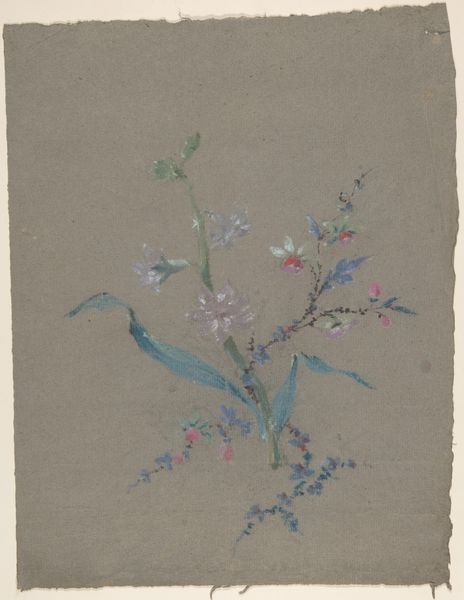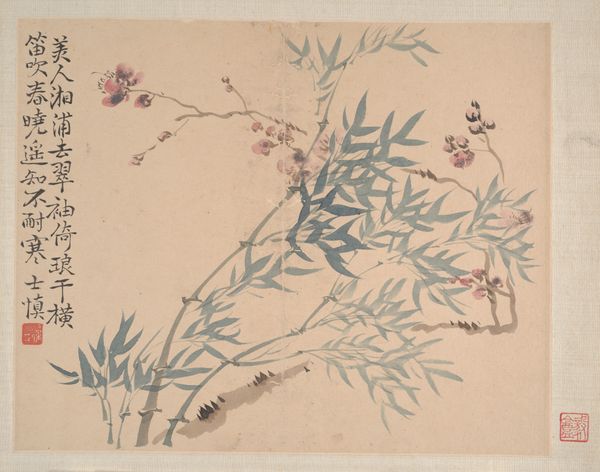![Autumn Flowers [left of a pair] by Oki Ichiga](/_next/image?url=https%3A%2F%2Fd2w8kbdekdi1gv.cloudfront.net%2FeyJidWNrZXQiOiAiYXJ0ZXJhLWltYWdlcy1idWNrZXQiLCAia2V5IjogImFydHdvcmtzL2NlNzcwODQxLWY0ODItNGZiNC1hYTk0LTNjZDAwM2ZhZDk4Yy9jZTc3MDg0MS1mNDgyLTRmYjQtYWE5NC0zY2QwMDNmYWQ5OGNfZnVsbC5qcGciLCAiZWRpdHMiOiB7InJlc2l6ZSI6IHsid2lkdGgiOiAxOTIwLCAiaGVpZ2h0IjogMTkyMCwgImZpdCI6ICJpbnNpZGUifX19&w=3840&q=75)
painting, watercolor
#
water colours
#
painting
#
asian-art
#
watercolor
#
line
#
botanical art
#
watercolor
Dimensions: 44 1/2 × 16 1/4 in. (113.03 × 41.28 cm) (image)71 1/4 × 19 9/16 in. (180.98 × 49.69 cm) (mount, without roller)
Copyright: Public Domain
Editor: Here we have “Autumn Flowers,” one half of a diptych, created around the mid-19th century by Oki Ichiga. It’s a watercolor painting, mounted as a hanging scroll. The muted palette feels so peaceful. What catches your eye when you look at this piece? Curator: Peaceful is a wonderful word for it. For me, the composition speaks volumes. Notice how Ichiga uses empty space? It’s not just background; it's almost a character itself, allowing those vibrant morning glories and feathery grasses to breathe. You almost feel a gentle breeze. Ever think about how silence can amplify a conversation? It’s the same principle. What do you think that negative space achieves here? Editor: I guess it spotlights the flowers more? Otherwise it might feel a little crowded. The blue really pops against that pale background. Curator: Exactly. It emphasizes the delicate balance, the ephemerality of the scene. These works often evoke a sense of longing, a connection to the transient nature of beauty. Do you get any hint of the Japanese aesthetic of *wabi-sabi* here, maybe in the slightly faded tones, the natural imperfections? Editor: Now that you mention it, I can definitely see that in the somewhat subdued colors and how the stems are bending every which way. Curator: It’s about finding beauty in imperfection, isn’t it? Which, let's face it, is far more interesting than striving for flawless symmetry! Editor: I’m definitely seeing this painting in a whole new light. It’s like the artist is inviting us to slow down and notice the subtle moments in nature. Curator: Precisely! And isn't that what art should do? Open our eyes, our hearts, to the beauty that surrounds us, in all its imperfect glory.
Comments
minneapolisinstituteofart almost 2 years ago
⋮
In this painting celebrating autumn, a dragonfly, grasshopper, and several other insects fly and jump among the fringed pink petals of dianthus, pink bushclover, and other flowering grasses. The painter, Oki Ichiga, served the lords of the Tottori Domain but lived in Japan’s capital Edo (now Tokyo), where he was known for his eclectic style combining elements of other well-known painters. In this work, you can see the minutely detailed plants and insects in the vein of academic painters. To that, he added the “dripped pigment” (tarashikomi) technique learned from the decorative painters of the Rinpa school, enhancing the suggestion of light and three-dimensionality.
Join the conversation
Join millions of artists and users on Artera today and experience the ultimate creative platform.
